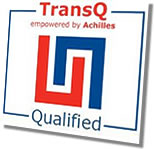Vi ser på sliper som ingen annan
About RailDoc
Flying ahead at 20 km/h
The story of Raildoc began in 2005 with an idea. Condition assessment of sleepers has been conducted in roughly the same way for over one hundred years: the human eye being the main instrument.
This is a time-consuming method and the results are not one hundred percent accurate. Surely, there must be a better way? With an estimated three billion sleepers on railways around the world, there is a potentially huge market for anyone who can streamline the process.
After several years of testing we have now developed a solution where we use ultrasound and/or laser to detect possible depression of the base plate and to determine its internal status. Depression and the extent of it is important information. If the base plate has sunk this suggests it is rotten, and that the sleeper needs to be replaced. With our proprietary inductive sensors we can also measure the position and possible misalignment of each base plate.
One of the biggest challenges during the design process was speed. To have any chance of commercial success the speed needed to be increased, preferably up to 5 km/h. In 2008 that goal was reached.
In 2009 we released our software Screen Tool which further enhances the product. With Screen Tool we can collect all measurement data into a searchable database where customers can obtain the accurate position and the degree of depression of each sleeper. Screen Tool also offers an overview of selected stretches in order to identify potential problem areas.
Raildoc today has its headquarters in Borlänge, Sweden.

Scandinavian Track Group
Raildoc is part owned by Scandinavian Track Group (STG) since 2006. STG includes subsidiaries RWS AB, Tracks 1435 AB, ITC AB, RSS AB and RailDoc AB. STG builds and performs consulting services for rail with a turnover of around 100 million SEK. About eighty people are employed within the Group. STG’s headquarters are located in Borlänge.

